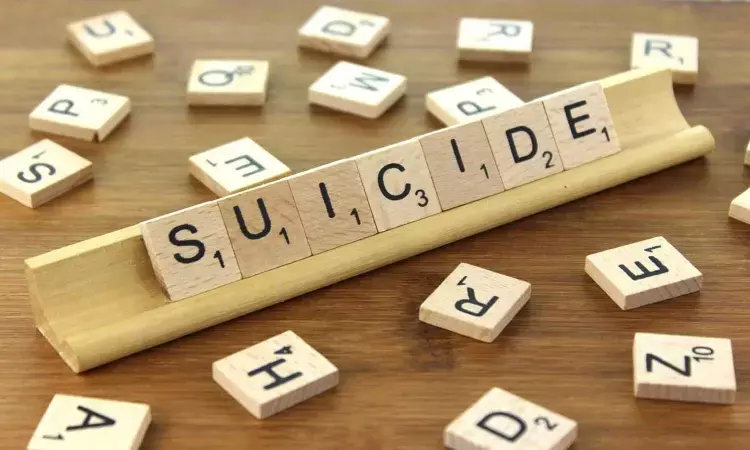- Home
- Medical news & Guidelines
- Anesthesiology
- Cardiology and CTVS
- Critical Care
- Dentistry
- Dermatology
- Diabetes and Endocrinology
- ENT
- Gastroenterology
- Medicine
- Nephrology
- Neurology
- Obstretics-Gynaecology
- Oncology
- Ophthalmology
- Orthopaedics
- Pediatrics-Neonatology
- Psychiatry
- Pulmonology
- Radiology
- Surgery
- Urology
- Laboratory Medicine
- Diet
- Nursing
- Paramedical
- Physiotherapy
- Health news
- Fact Check
- Bone Health Fact Check
- Brain Health Fact Check
- Cancer Related Fact Check
- Child Care Fact Check
- Dental and oral health fact check
- Diabetes and metabolic health fact check
- Diet and Nutrition Fact Check
- Eye and ENT Care Fact Check
- Fitness fact check
- Gut health fact check
- Heart health fact check
- Kidney health fact check
- Medical education fact check
- Men's health fact check
- Respiratory fact check
- Skin and hair care fact check
- Vaccine and Immunization fact check
- Women's health fact check
- AYUSH
- State News
- Andaman and Nicobar Islands
- Andhra Pradesh
- Arunachal Pradesh
- Assam
- Bihar
- Chandigarh
- Chattisgarh
- Dadra and Nagar Haveli
- Daman and Diu
- Delhi
- Goa
- Gujarat
- Haryana
- Himachal Pradesh
- Jammu & Kashmir
- Jharkhand
- Karnataka
- Kerala
- Ladakh
- Lakshadweep
- Madhya Pradesh
- Maharashtra
- Manipur
- Meghalaya
- Mizoram
- Nagaland
- Odisha
- Puducherry
- Punjab
- Rajasthan
- Sikkim
- Tamil Nadu
- Telangana
- Tripura
- Uttar Pradesh
- Uttrakhand
- West Bengal
- Medical Education
- Industry
Majority of males who die by suicide have no known mental health issues

Majority of males who die by suicide have no known mental health conditions, according to a study published in the American Journal of Preventive Medicine.
Suicide among men is a serious public health issue. Guys accounted for approximately 80% of suicide deaths in the United States in 2019, and suicide was the seventh top cause of death for males aged 10 years and older. Males who commit suicide are less likely than girls to have known mental health issues, therefore identifying preventive points outside of mental health institutions is critical. As a result, Katherine A. Fowler and her colleagues undertook this study to examine suicide characteristics among boys with and without known mental health disorders by age group in order to inform preventive efforts.
The National Violent Death Reporting System (NVDRS) of the Centers for Disease Control and Prevention (CDC) (Appendix Text 1, available online) was analyzed for the three most recent years (2016–2018). The National Vital Statistics System (NVDRS) abstracts death certificates, coroner/medical examiner reports, and law enforcement records following established Centers for Disease Control and Prevention guidelines.
All of the variables used were typical NVDRS variables. Suicides were defined as deaths caused by purposeful self-harm in people under the age of ten. Adolescents (ages 10–17), young adults (ages 18–34), middle-aged adults (ages 35–64), and elderly people (ages >65) were the age groups studied. The presence of a KMHC was determined using the NVDRS variable identified mental health condition.
The key findings of this study were as follow:
1. The majority of male suicide victims had no recognized mental health issues.
2. Those without documented mental health issues were more likely to die by firearm, and many of them tested positive for alcohol.
3. Relationship troubles, conflicts, and/or a crisis were more common among adolescent, young adult, and middle-aged males without known mental health conditions than among those with known mental health illnesses.
In conclusion, these findings emphasize the necessity of preventing emotionally reactive/impulsive suicides by reducing acute situational stressors. In addition to typical psychiatric markers, suicide prevention programs for men may focus on age-specific triggering events.
Reference:
Fowler, K. A., Kaplan, M. S., Stone, D. M., Zhou, H., Stevens, M. R., & Simon, T. R. (2022). Suicide Among Males Across the Lifespan: An Analysis of Differences by Known Mental Health Status. In American Journal of Preventive Medicine. Elsevier BV. https://doi.org/10.1016/j.amepre.2022.02.021
Neuroscience Masters graduate
Jacinthlyn Sylvia, a Neuroscience Master's graduate from Chennai has worked extensively in deciphering the neurobiology of cognition and motor control in aging. She also has spread-out exposure to Neurosurgery from her Bachelor’s. She is currently involved in active Neuro-Oncology research. She is an upcoming neuroscientist with a fiery passion for writing. Her news cover at Medical Dialogues feature recent discoveries and updates from the healthcare and biomedical research fields. She can be reached at editorial@medicaldialogues.in
Dr Kamal Kant Kohli-MBBS, DTCD- a chest specialist with more than 30 years of practice and a flair for writing clinical articles, Dr Kamal Kant Kohli joined Medical Dialogues as a Chief Editor of Medical News. Besides writing articles, as an editor, he proofreads and verifies all the medical content published on Medical Dialogues including those coming from journals, studies,medical conferences,guidelines etc. Email: drkohli@medicaldialogues.in. Contact no. 011-43720751


